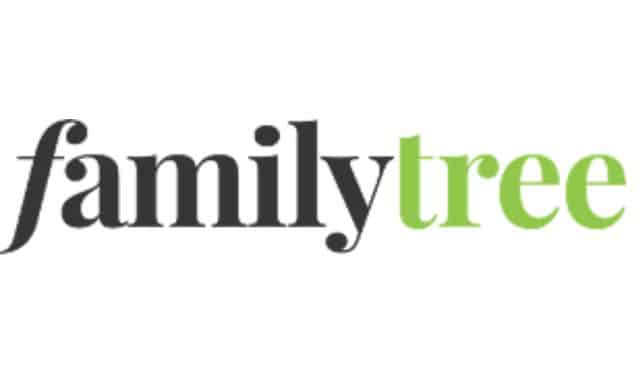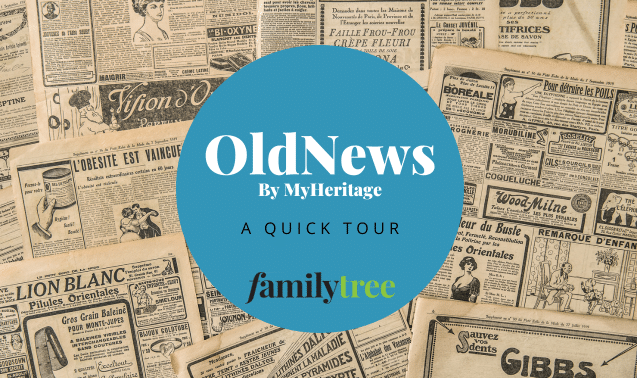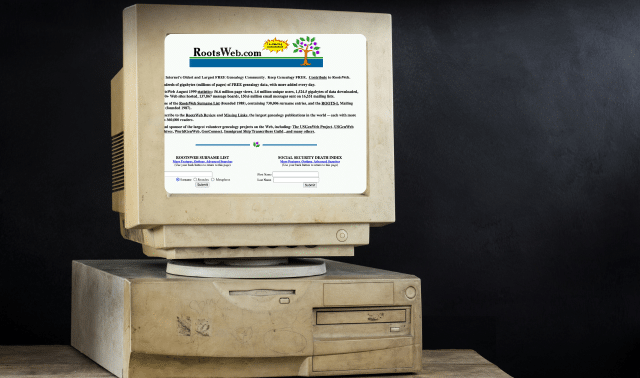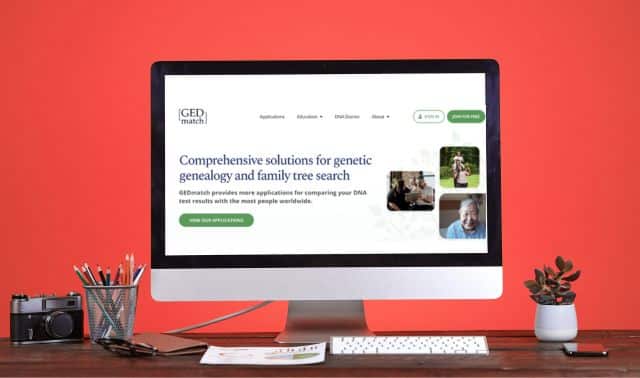
Genealogy.com’s roots go back to the mid-1990s, when Banner Blue Software created FamilyTreeMaker.com, a companion site for its popular genealogy software. At first, the majority of the site’s content was dedicated to Family Tree Maker (FTM) users and purchasers of the company’s extensive line of genealogy-related CD-ROMs.
Over time, though, the site expanded to include Genealogy.com, a major stop for anyone in search of ancestors — not just FTM users. In April 2003, the company underwent yet another metamorphosis when it was acquired by MyFamily.com — the same folks who own Ancestry.com.
Today, you’ll find a powerful search engine at Genealogy.com, along with a whole bagful of free resources, including lessons, how-to articles and one of the best collections of genealogy message boards on the Internet.
If you’re not getting the most out of Genealogy.com, you’re missing a handy path to your family’s past. Blaze your own trail through this mammoth site with these tips.
Smart searching
Genealogy.com’s Family Finder search engine is unique in that it searches its own collection of fee-based databases, as well as thousands of free message boards, personal sites and genealogically relevant Web pages. The engine is a “smart” one — designed to pick up only those Web sites that contain genealogy information. As a bonus, it has the ability to recognize variations of common first names. For example, if you search for Jim, Family Finder will also locate James.
The fastest way to search — if you’re not an FTM software user — is to click on the Search tab on the top of the home page, then choose Family Finder. Just fill in the name of your ancestor and click the Go button. (You need to enter at least a surname.) I ran a quick search for John Knox, birthplace Ohio. The results page showed more than 5,000 matches; of those, more than 1,000 were in records I could search for free.
To help you determine which hits will be the most useful, all the results have a five-star rating to indicate how closely the hit matches your search parameters. If you want to refer to your search results later, click the Save this Search button at the bottom of the screen. If any of your hits turn out to be real busts, check the box next to “Don’t show this match again.”
If your search returns too many hits, try this tip: Run your search, and then click “Create and Search a Family Tree” at the bottom of the results page. A pedigree chart will pop up. From there, add the name of a spouse, mother or father, and then click the Search box. The next page of results will show matches for every name contained in the family group that you’ve just created.
If you’re still getting too many hits, choose Individual Search from the Search menu on your pedigree-chart page. This option lets you see only the hits for any one of the people you added to the pedigree chart.

Using FTM, I ran a search on my paternal grandmother. The Family Finder report came back showing that my grandmother was found in the World Family Tree, along with one other person from my family file. It also told me that the tree spanned 15 generations and included four people who are possibly in my family.
What happens if the most-relevant hits are in fee-based collections? Either purchase the appropriate CD-ROM or subscribe to an annual or monthly plan that allows you to access online data.
A dot-com community
Many of my most-exciting genealogy breakthroughs come from meeting other researchers online. And Genealogy.com’s Community area makes forming online connections easy. Click on the Community tab at the top of the home page, and you’ll find an entryway to message boards, the virtual cemetery, family home pages and, with any luck, more than just a clue or two. Here’s how to maximize your time online in the Community area:
• GenForum: With more than 12 million messages and growing, GenForum’s message boards (accessible directly at <genforum. genealogy.com>) are some of the most extensive on the Internet. Divided into boards for surname, locale and general topics, Gen-Forum lets you post queries on your thorny research problems, as well as read and respond to other messages.
Use the search box to find a specific forum, or browse through an alphabetical listing of surnames, US states, countries and miscellaneous topic boards. Next, click on the forum’s name, and you’ll see a listing of messages.
The forums that cover popular or common surnames can have thousands of messages. Browsing through them isn’t really an effective option. Instead, use the search box at the top of each individual forum. Just enter the name or phrase you’re searching, and only messages on that particular forum will be retrieved.
You also can choose to display just the messages posted today or within the last week or month (click Latest Messages). Other choices let users display all messages or sort by date. If you find a query that you’d like to respond to, you’ll need to fill out a form for free registration. Registering also allows you to post messages and to receive an e-mail notification whenever someone responds to your query. If you try to post without registering, a page will open, prompting you to register.
To respond to a query, click on the Post Followup button. If you don’t want to have to keep checking back on the forum to see if someone has responded to your query, check the box next to “Notify me whenever some-one replies to my messages.” When you post, you’ll also have the option of displaying your e-mail address. If you don’t want to risk getting junk mail, uncheck the “Display my e-mail address” box.
Another dandy feature lets you add any forum to your My GenForum List. When you click the “Add this forum” box (located at the bottom of each forum page), it will be added to a list of quick links. That means the next time you visit Genealogy.com, you won’t have to waste time looking for forums of interest — just click on the quick link. FTM users can go directly to the forums by clicking on the Internet menu, then on Message Boards.
• Family Home Pages: Looking for a place to hang your genealogical hat? Create a home page to share research, photos and family stories — all for free.
When you register for a family home page at Genealogy.com — just click “Create a home page” under Community/Family Home Pages to get started — you’ll have several options. First, decide whether you want your name, phone number or address to appear on your Web page. Next, you’ll begin building your space by naming your Web site and briefly describing your family research. Click Edit to add family trees, photos, links and related files. You’re allowed 10MB of free space, but you don’t have to worry about keeping tabs on that — the system will track your usage and notify you of how much space you have left.
Adding a family tree via a GEDCOM file (the universal file format for family trees) is a snap. Once you’ve uploaded the file, a link is placed on your home page. Whenever a visitor clicks on it, your family tree is displayed. Initially, only minimal information about an individual is displayed — to see more details, viewers of your page can click on a person and type D for details, or right-click on the name and pick Details from the menu choices. To find someone in the tree quickly, viewers type F. If you decide you no longer want a particular tree to be accessible on the site, it’s easy to remove by clicking Edit/ Related Files/Remove.
If you’re an FTM user, just open your software and click Internet on the top menu. From there, you can automatically go to your home page or publish your family tree to the Internet. Note that if you’re uploading a home page from FTM, your page will be on the FamilyTreeMaker.com site.
• Virtual Cemetery: Don’t take a stroll through the Virtual Cemetery and expect to find a few million names in an online database. This Community-area site was created as a place for volunteers to upload tombstone photos and transcriptions in hopes of helping other researchers who can’t travel to the family burial site. So what you find here depends on the kindness of strangers.
To search for a tombstone, fill in as many fields as possible, then click Search. If you aren’t sure where someone is buried, don’t fill in the location fields. The results page will include the deceased person’s name and place of burial. Click on any name for more-detailed information and a photo, if there is one.
To contribute a tombstone record, fill in as much of the form as possible — don’t worry if it asks for information you don’t have. You can opt to include your e-mail address so other researchers can contact you. Your photos must be in JPG or GIF format. Click on “Explanation of image file formats” for detailed information on how to minimize your graphic file’s size for quicker uploading.
Get educated
Whether you’re new to genealogy or already a genie wizard, check out Genealogy.com’s Learning Center — it’s crammed with helpful information. To access all these resources, just click the Learning Center tab at the top of the Genealogy.com home page.
Beginner genealogists should click the New? Start Here link to begin building a family tree, search for family or create your own home page. When you’re ready to learn more about genealogy, delve into how-to articles and free classes.
The articles cover just about every genealogy topic imaginable, including research basics, ethnic research, census and church records, immigration, technology and family reunions. There’s even a special section for FTM users on how to use the software.
You’ll also find free online classes on Beginning Genealogy, Internet Genealogy and Tracing Immigrant Origins. In all, the Learning Center offers close to 90 lessons, covering such topics as digital photography, genealogy charts, organization techniques and vitalrecords substitutes.
Star Search
As much as we may hate to admit it, we love reading about the rich and famous. And as genealogists, we love it even more if we think there’s a chance our family lives on a branch of a famous tree!
Click over to Genealogy.com’s Celebrity Trees to check out the ancestries of some of the world’s most famous — and infamous — people, ranging from John Wayne to Czar Nicholas II to Clara Barton. You can access the trees either from links on the home page (look for recent additions) or under the Community tab.
Famous family trees fall under these categories: Historical Figures, First Families & Royalty and Artists & Athletes. Some of these trees were compiled by Family Tree Magazine contributor Rhonda McClure, author of Finding Your Famous (& Infamous) Ancestors (Betterway Books).
Wonder if you’re related to a celebrity? Download a famous tree, open it with your genealogy software and start looking for common names.
A handy and often-overlooked stop on this part of Genealogy.com is the Reference Guide. Here, you’ll find links to county, state, national and international resources, including addresses and phone numbers for county courthouses, genealogical societies, vital-record repositories, religious organizations and ethnic groups. Use the Step-by-Step Guide to Finding Information for help in locating specific records. For example, if you can’t find a birthplace, the guide will tell you all the documents in which a birth record is likely to appear.
The Learning Center also contains a genealogy glossary, suggested-reading list and links to more than 50,000 genealogy Web sites. If you’re interested in writing about any of your family members, don’t miss the Biography Assistant, a detailed guide to recording family memories. FTM users can access just about every part of the Learning Center from the Internet menu included as part of the FTM software.
Make it personal
Genealogy.com goes the extra mile to give site visitors a personalized experience. Remember the search you saved? It and your family trees, home page, forums, online data subscriptions and contributions to the Virtual Cemetery are all recorded and displayed under the My Genealogy.com tab. If you run a lot of searches or consistently visit the message boards, use My Genealogy.com as a timesaving launch pad.
Once you’ve set up a home page or added a forum to your favorites list, you’ll really appreciate the speedy navigation you get with My Genealogy.com. For example, just click on a saved search to launch a new one using the same search parameters, without having to go back and enter the data time and again.
You don’t have to do anything special to initiate this feature; it’s automatically set up once you utilize one of the site’s personal options such as saving a search. The next time you log on to the site, you’ll see a welcome message at the top of the home page, along with quick links to view your home page, forums, searches or online data.
For a site with its roots in a software program, Genealogy.com has grown into one of the best free resource centers on the Web. With millions of names in message boards, Web pages and fee-based databases, this segment of the information superhighway may well house part of your own family.
Genealogy.com’s Dollar Menu
If you’re willing to lay down a few dollars to explore commercial databases, Genealogy.com has some dandy deals. The company’s fee-based collections can be purchased separately or as part of a package. Click the Shop tab on the home page to sample and purchase these collections:
•Family and Local Histories:
Consumer access to data from the HeritageQuest Online service sold to libraries. Annual subscription $79.99, monthly $14.99.
•Genealogy Library: Family histories and historical texts. Currently holds 300 million-plus records. Annual subscription $49.99, monthly $9.99. (See our review in the October 2001 Family Tree Magazine.)
•International and Passenger Records Collection: Passenger lists for every major Atlantic port, plus European and Canadian records. Annual subscription $79.99, monthly $14.99.
•US Census Collection: View images of 1790 to 1930 census pages, with indexes for 1790 to 1820, 1860, 1870, 1890, 1900 and 1910. Annual subscription $99.99, monthly $19.99.
•World Family Tree: Huge collection of user-contributed family trees. WFT subscribers can contact trees’ submitters to exchange data. Annual subscription $49.99, monthly $9.99.
If you’re thinking about trying Family Tree Maker, your best bet may be the Gold Annual Membership. This plan includes the software and one year of access to Genealogy Library, the US 1900 census, the International and Passenger Records Collection and World Family Tree for $199.99. The package also includes an FTM video and technical support. Other membership options start at $69.99.




